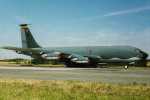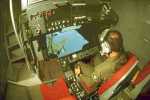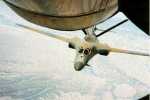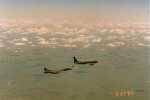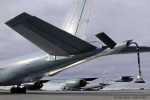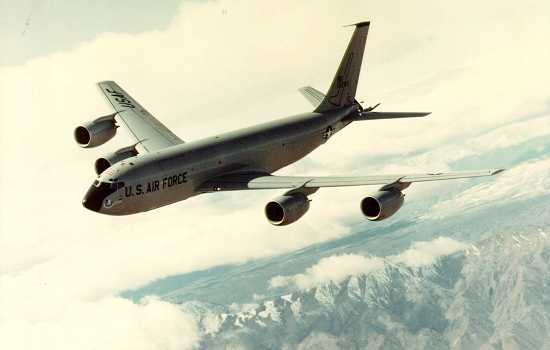
Derived from Boeing's prototype 707 jet airliner in the early 1950s, the C-135 has been a visible successful partner of the Air Force since the first one was acquired in August 1956. Although they have performed numerous transport and special-duty functions, most of the 820 units have been KC-135A Stratotankers for the air refueling mission. In this photo, the movable "flying boom" is visible under the tail. |
||||||
|
... Flying in a KC-135 does give us an opportunity to see some interesting sights. 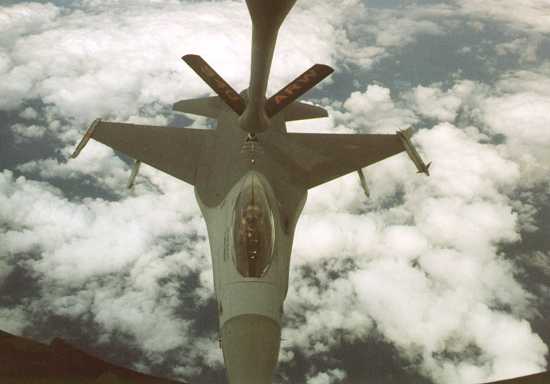 |
||||||
|
... This is a medivac (trainer) on a KC-135. This aircraft is an air tanker. We also use it as needed.  |
||||||
None of the air strikes
on Afghanistan would be happening without in-flight refuelling.
The nearest targets in Afghanistan might be at least 1,000 miles (1,600 km) away from the US Navy aircraft carriers. The F-14 and F/A-18 planes are in the air for seven or eight hours and need refuelling at least four times during every sortie. Land-based fighter-bombers have similar limitations. Even for the long-range bombers, refuelling is essential. A big B-52 has a nominal range of well over 8,000 miles (12,870 km) - but once it is carrying a bomb load this reduces dramatically. So bombers flying from the United States to attack Afghanistan also have to refuel several times on the way out and back. There are two main types of in-flight refuelling system in current use: Drogue - a hose is
winched out from the tanker with a cone-shaped basket on the end. The receiving
aircraft has a boom or probe which its pilot flies into the basket. Used
by most air forces and by the US Navy.
The big tanker aircraft are typically converted airliners. Those on aircraft carriers are much smaller and have a limited capacity. The US Air Force operates KC-10 Extenders and KC-135 Stratotankers. The RAF has Tristar and VC10 tankers - two industry groups are bidding for a contract to provide a replacement by the end of the decade. |
